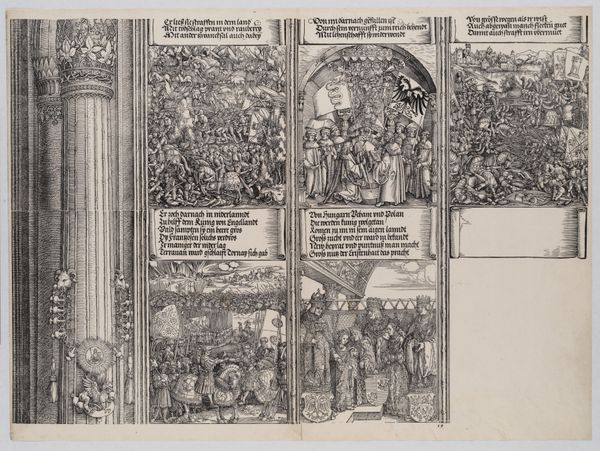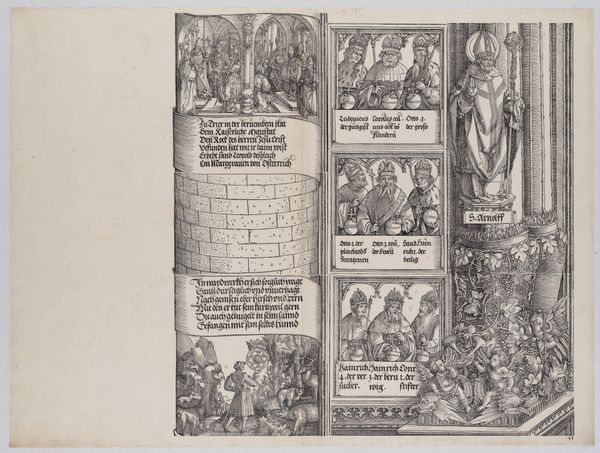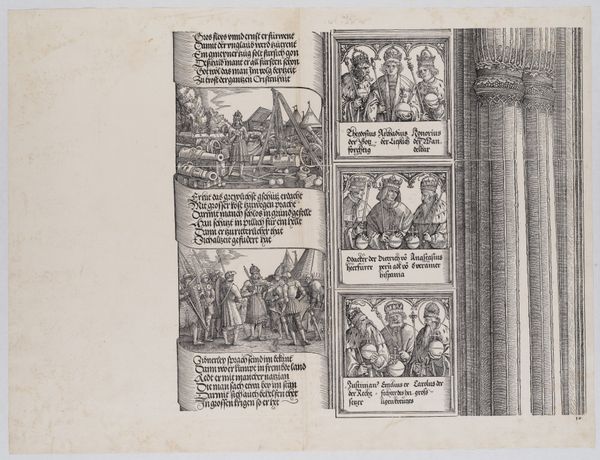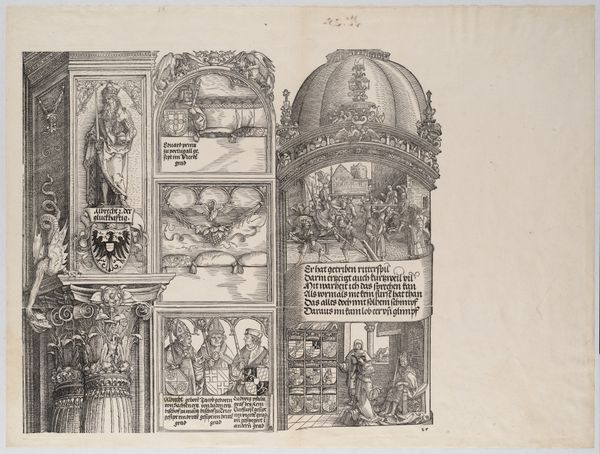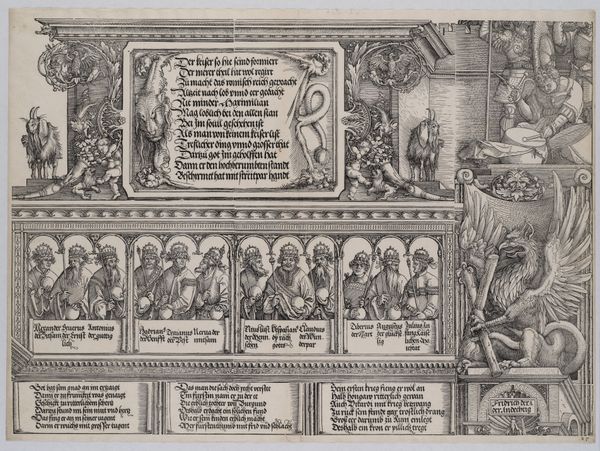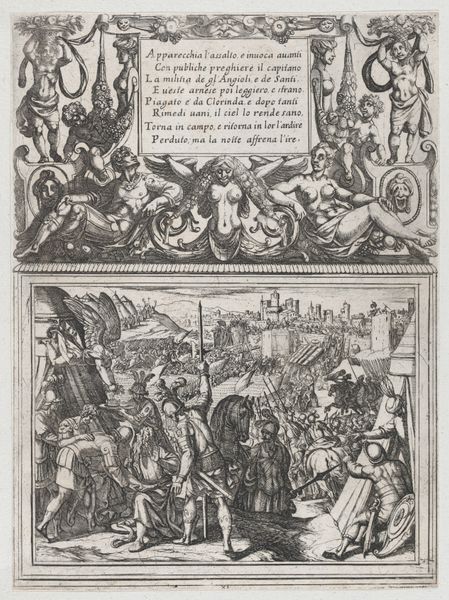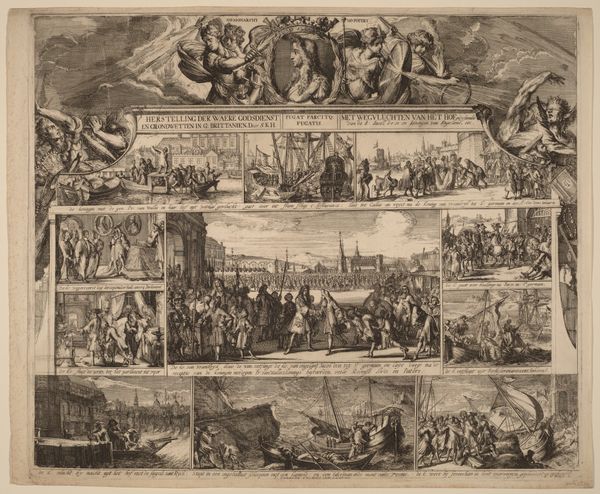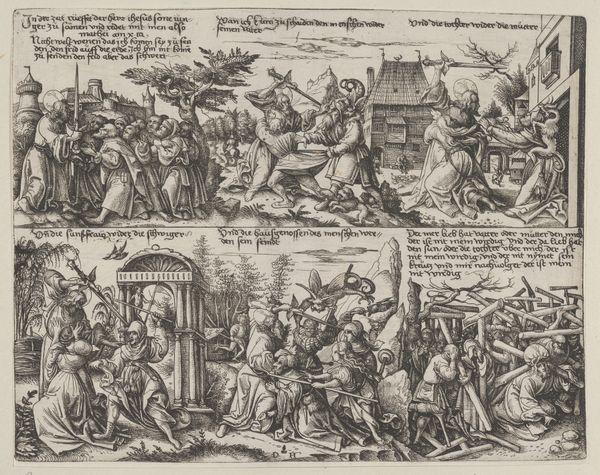
The First Flemish Rebellion; The Campaign Against Liège; The Coronation of Maximilian; The Second Flemish Rebellion; The Alliance Between Philip I of Castile and Henry VII; The Victory Against France, from the Arch of Honor, proof, dated 1515, printed 1517-18 1515
0:00
0:00
drawing, print, woodcut, engraving
#
drawing
#
narrative-art
# print
#
figuration
#
woodcut
#
line
#
history-painting
#
northern-renaissance
#
engraving
Dimensions: Sheet: 14 7/16 × 25 1/16 in. (36.6 × 63.7 cm)
Copyright: Public Domain
Editor: So, this enormous print—it’s actually several panels joined together—is called "The First Flemish Rebellion; The Campaign Against Liège; The Coronation of Maximilian; The Second Flemish Rebellion; The Alliance Between Philip I of Castile and Henry VII; The Victory Against France.” It was created in 1515 by Hans Springinklee. The detail is incredible for a woodcut and engraving. I’m immediately struck by how much violence and political maneuvering it depicts. How do you even begin to unpack a piece like this? Curator: It's a visually arresting piece, isn't it? Think about what this arch, this ‘Arch of Honor,’ was meant to convey. It's not just a historical record; it's a carefully constructed piece of propaganda, attempting to solidify the power and legitimacy of the Habsburg dynasty, specifically Emperor Maximilian I. Consider how the artist uses visual language to portray different power dynamics. Who is given prominence? How are victories framed, and what’s conveniently left out? This isn't a neutral retelling; it's a strategic narrative designed to shape public opinion. Do you see how different social classes might respond to such a display of power? Editor: I suppose the emphasis on military victories and alliances is meant to inspire awe and project strength, but to me, it also highlights the cost of such power—the endless conflicts, the subjugation of different groups. Are these “victories” necessarily just if they rely on violence and oppression? Curator: Precisely. It forces us to question the glorification of military might and consider whose stories are being erased or manipulated. The artist presents a very specific perspective on these events, one that favors the ruling class. Thinking critically about the narrative framing allows us to challenge the accepted historical accounts and explore the experiences of those who were marginalized or actively harmed by these power struggles. Editor: It’s fascinating how a single artwork can contain so many layers of meaning, power, and propaganda. Thanks for opening my eyes to the narratives at play. Curator: It’s a good reminder that even seemingly straightforward historical depictions can be deeply embedded in power structures. Art provides fertile ground for examining these dynamics critically.
Comments
No comments
Be the first to comment and join the conversation on the ultimate creative platform.

